Physiology tests
Physiology testing is an analysis of blood lactate response to exercise intensity. Runners, triathletes and cyclists can maximise aerobic and anaerobic performance. Physiology tests are suitable for athletes where running and cycling training thresholds would be beneficial for training.
About your physiological assessment
Our Sports Performance experts will provide you with your analysis report within a week.
A Lactate Threshold test measures your blood lactate level during exercise and can be used to develop athlete training zones. These training zones can be described as running speed, power output or heart rate and can be used to improve the benefits of your training. Furthermore, these thresholds are good predictors of endurance performance.
Your test involves multiple continuous 3-minute exercise bouts, starting easy and getting progressively more difficult until you reach a very tough intensity. Your test will last approximately 40 minutes. Two thresholds can be identified during this test, which we provide you with in your report, and can be used in your training. The thresholds are then used to calculate training zones, which you may use in training.
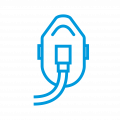
Expired air

Heart rate
You will wear a chest band, a heart rate monitor, or may wear your own.
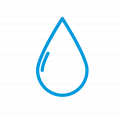
Lactate
A small sample of blood will be taken from the tip of your finger, for further analysis.
What measurements do we include in your report?
Test Duration: 60 minutes (Please allow 90 minutes)
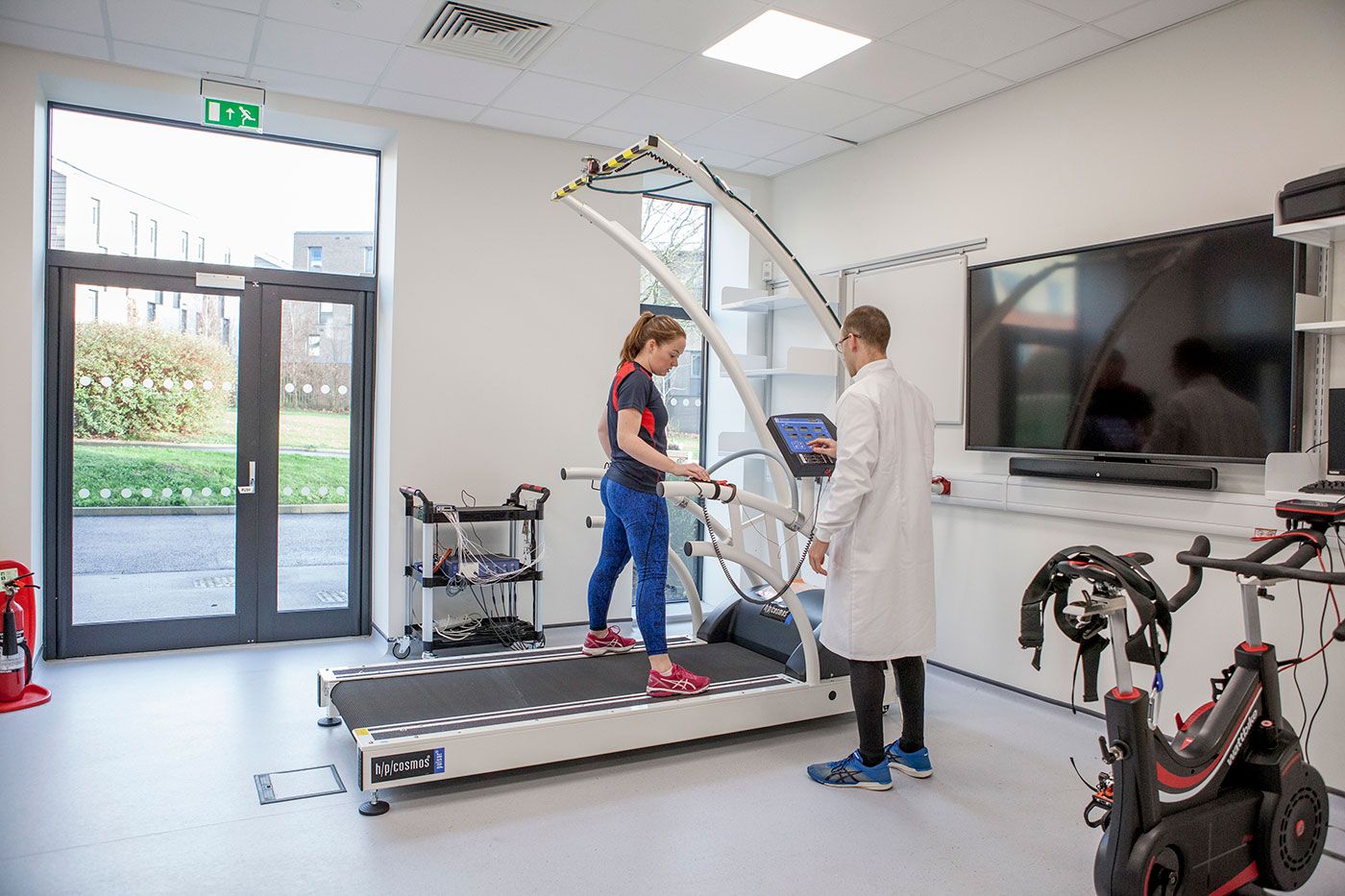
The First Threshold
This occurs at the exercise intensity at which blood lactate begins to rise above resting levels, termed Lactate Threshold (LT). It marks the shift from purely aerobic (low intensity) exercise to exercise that requires some anaerobic energy contribution (moderate intensity) that produces lactic acid. Exercising at an intensity at or below this threshold is relatively easy and you should be able to maintain it for a long duration (hours).
The Second Threshold
This occurs at a much higher intensity than the lactate threshold and represents the highest intensity that you can maintain for approximately 30 minutes. At intensities that are more difficult than this threshold, lactic acid would accumulate quickly to levels that would inhibit your ability to exercise and cause fatigue.
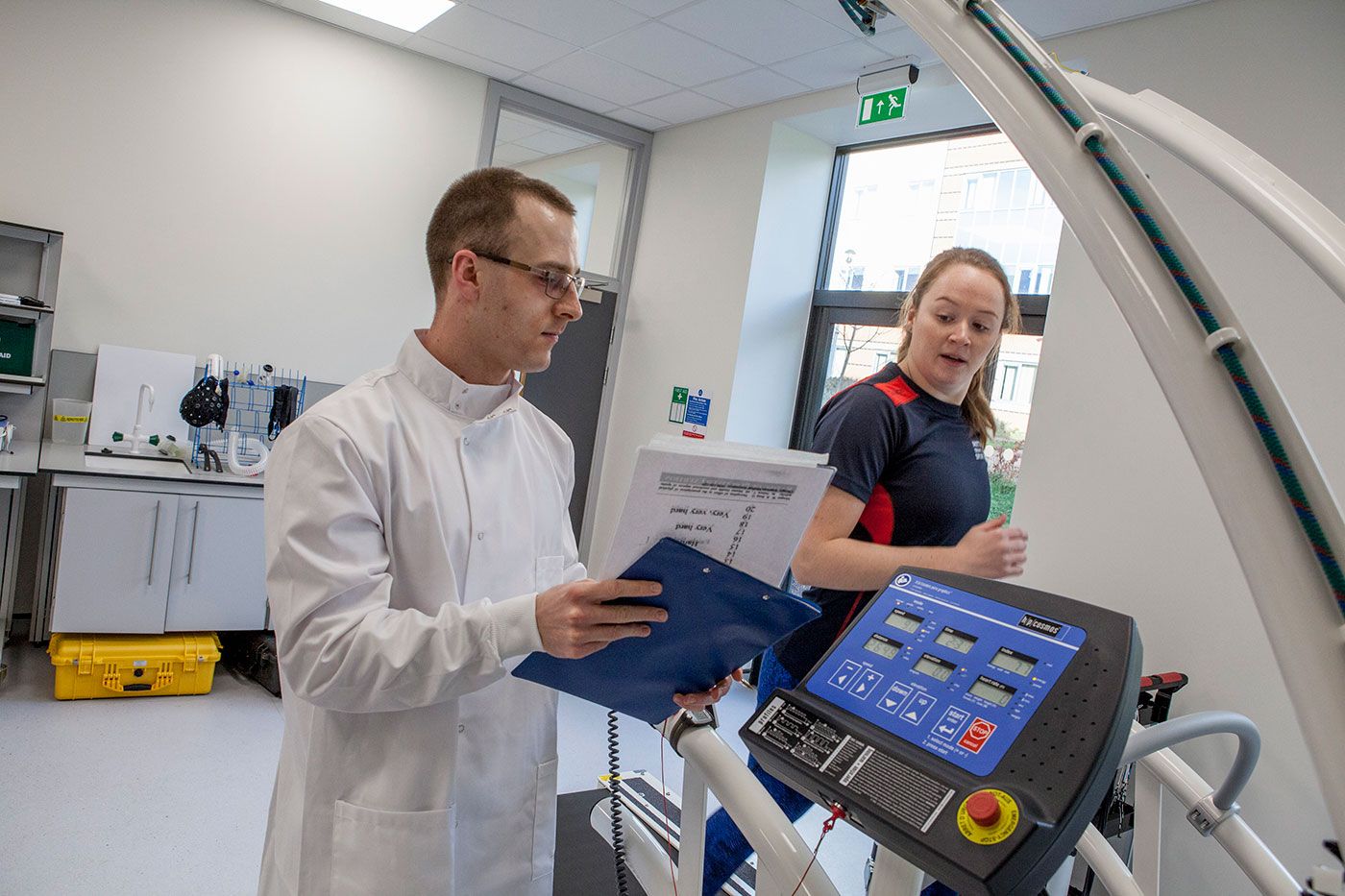
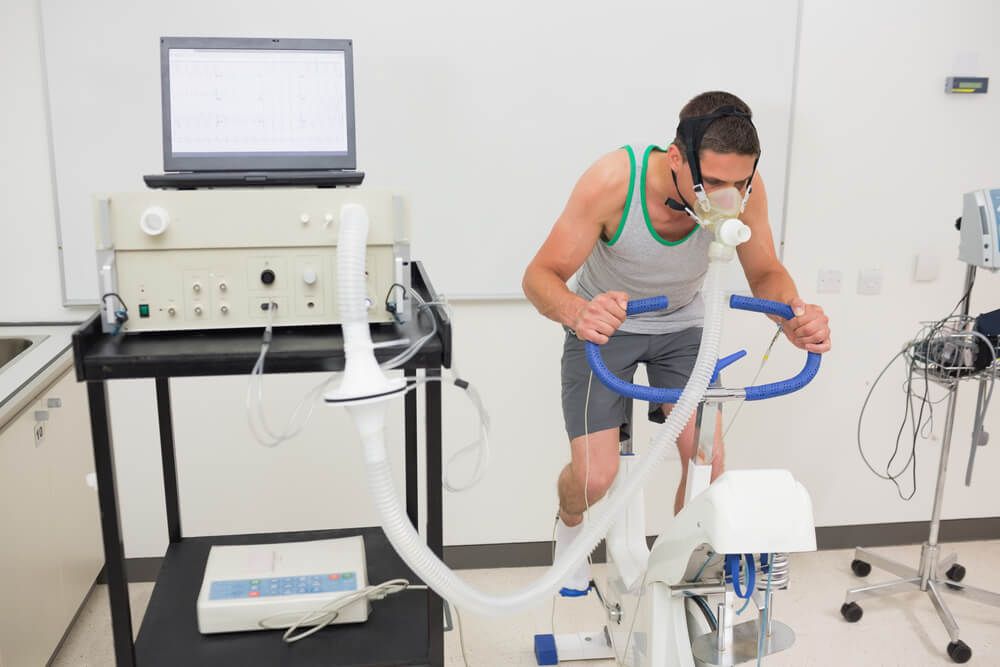
Maximal Oxygen Uptake (VO2 max)
Many athletes will have heard of this even if they have no background in sport science. This represents the largest volume of oxygen your body can use during exercise is known as maximal oxygen uptake (VO2 max) and indicates your aerobic potential.
This test also measures your peak aerobic power or running speed and the data can be used for setting training intensities. Your VO2 max is obtained by a separate small test which follows the blood lactate assessment.
VO2 Max Test
The test involves continuous exercise which gets more difficult every 1-minute. Initially, the exercise is easy and will gradually get harder using small increases in running speed and/or gradient (for treadmill protocols) or power output if being tested on a bike.
You will wear a mask over your nose and mouth throughout the test to allow respiration to be measured. This exercise test will last approximately 10-12 minutes and will be very tough towards the end.
